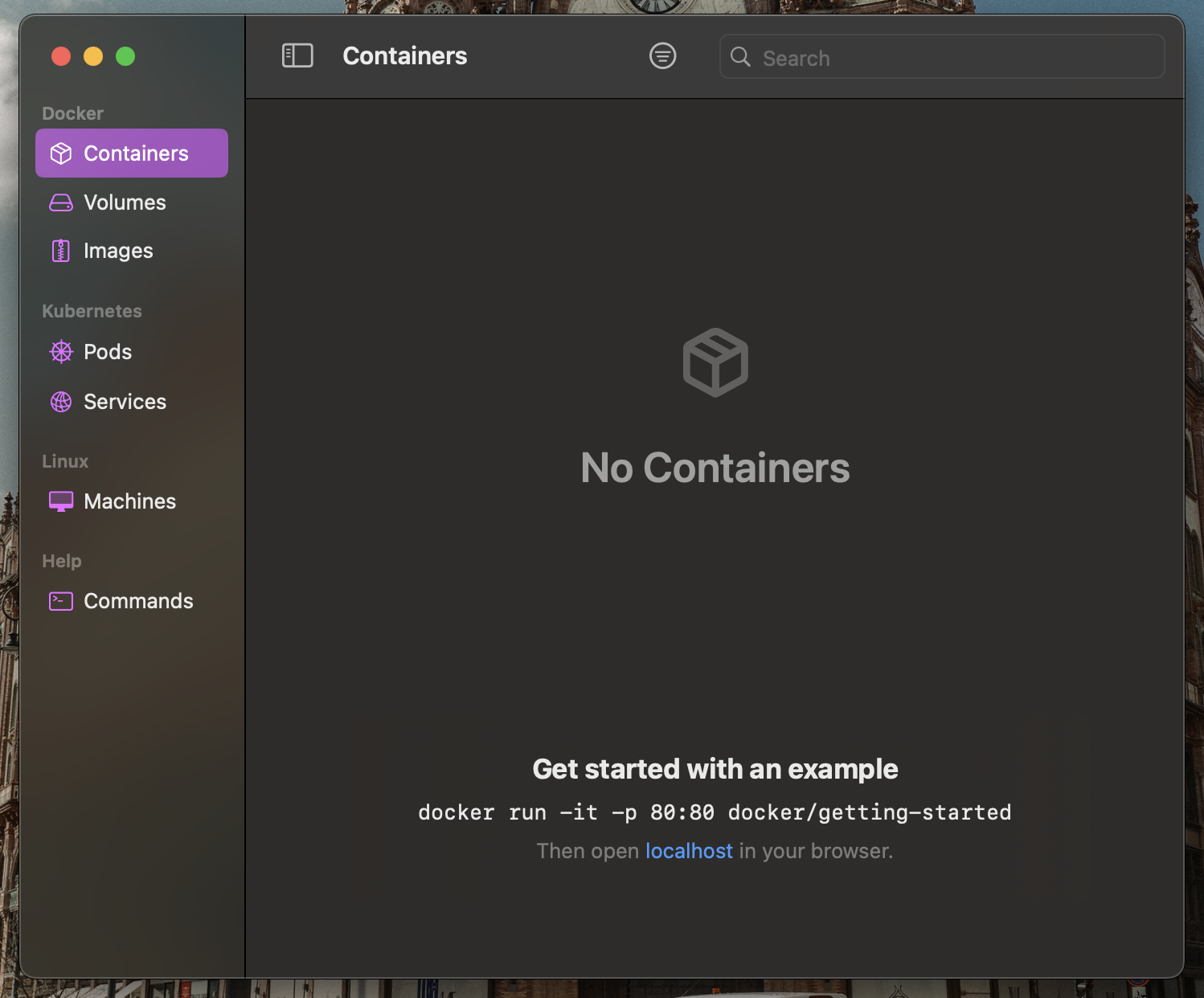Moving into OrbStack after a year using Rancher Desktop
Almost a year ago I started using Rancher Desktop as my Docker and Kubernetes client. I enjoy the fact that I didn’t need to know a lot about Kubernetes to easily jump into spinning up clusters, configure port fowarding and manage pods.
Uninstalling Rancher Desktop on macOS
Clean up any remaining Docker Containers and Volumes using the system prune subcommand.
docker system prune --all --volumes --force# -- snip --
pog7t3hmzcyurdvypx2fgoq7u
w8t2eav93yh12w0p9qaghdg5u
uh5vhr6tjhv73boiqo8d7bvur
nsm2ohhywv95uqk9bx2hcgpwb
yyt452o7gjp9xxmwu7djd1efc
n3ni6ght2y7pd011modusutep
Total reclaimed space: 21.376GBThis command cleaned up around 20 GBs of disk from my system.
Then, make sure Rancher Desktop is not running anymore, you can do this by
clicking on the Rancher Desktop icon on the status bar and then clicking on
the Quit Rancher Desktop option.
After making sure we dont have more Docker Containers running, we are good to
go and its time to delete the application from the ~/Applications directory.
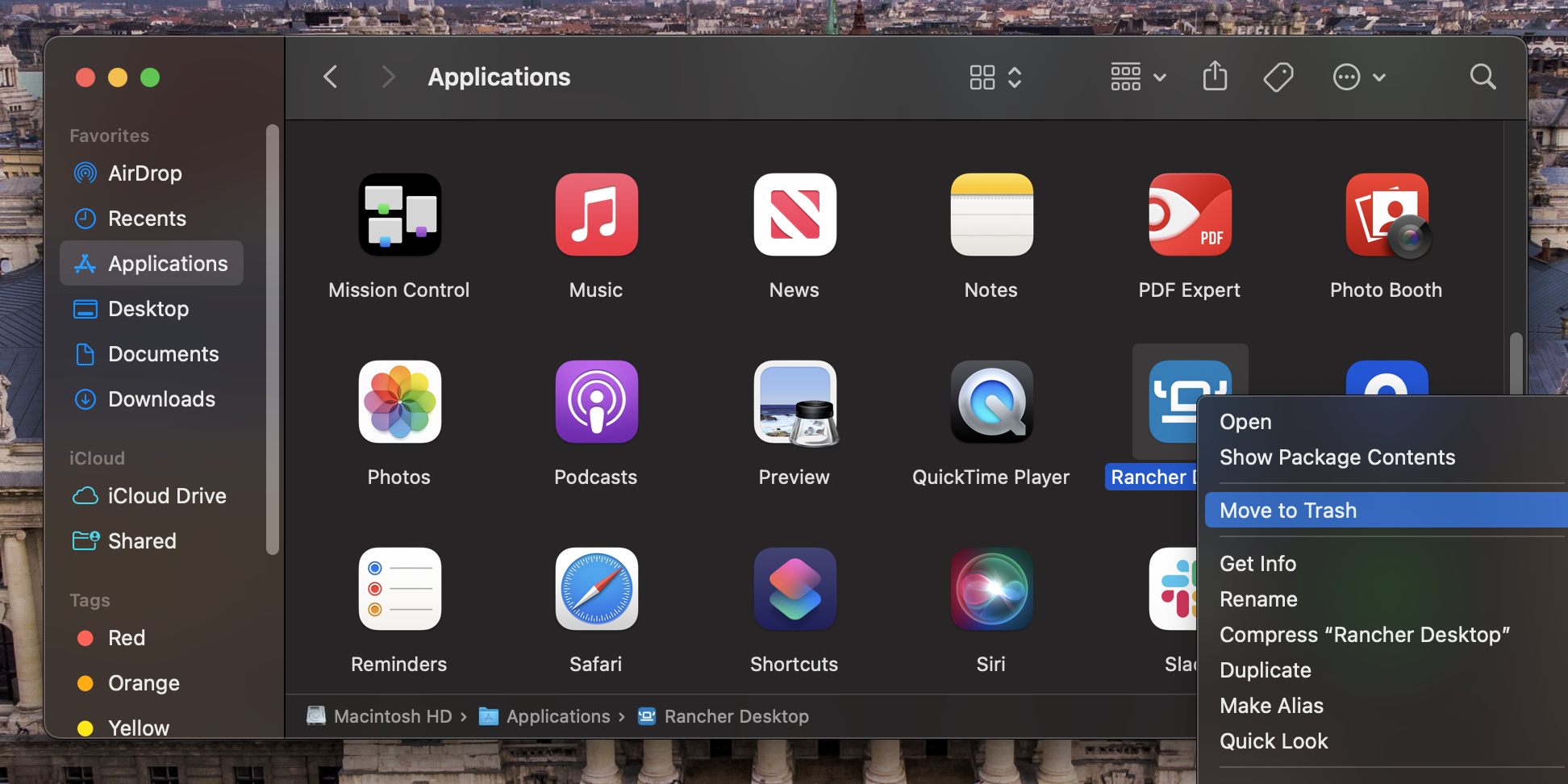
After deleting the Application Package, you will also want to delete remaining files, most macOS applications store files in other system directories, such as caches, logs, preferences and other user data.
These files lives on ~/Library directory, search for relevant files with a
path starting with rancher-desktop.
If you attempt to find any file containing rancher-desktop like this:
find ~/Library -name "rancher-desktop"You will encounter lots of Operation not permitted messages:
find: ~/Library/Application Support/CallHistoryTransactions: Operation not permitted
find: ~/Library/Application Support/com.apple.sharedfilelist: Operation not permitted
find: ~/Library/Application Support/Knowledge: Operation not permittedInstead you can use open ~/Library and navigate from there using the macOS
Finder.
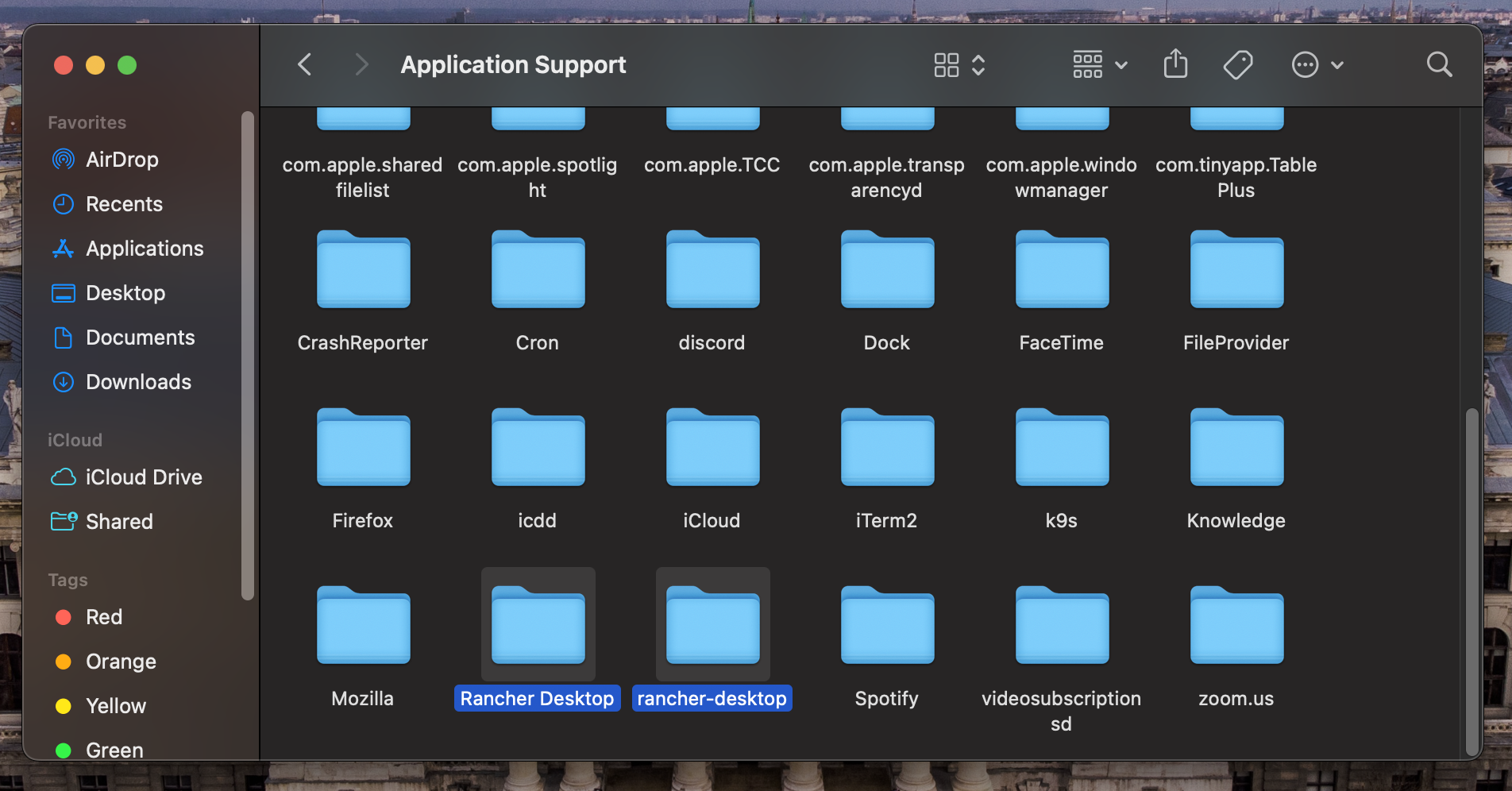
Also check for the Caches directory under ~/Library/Application Support/Caches
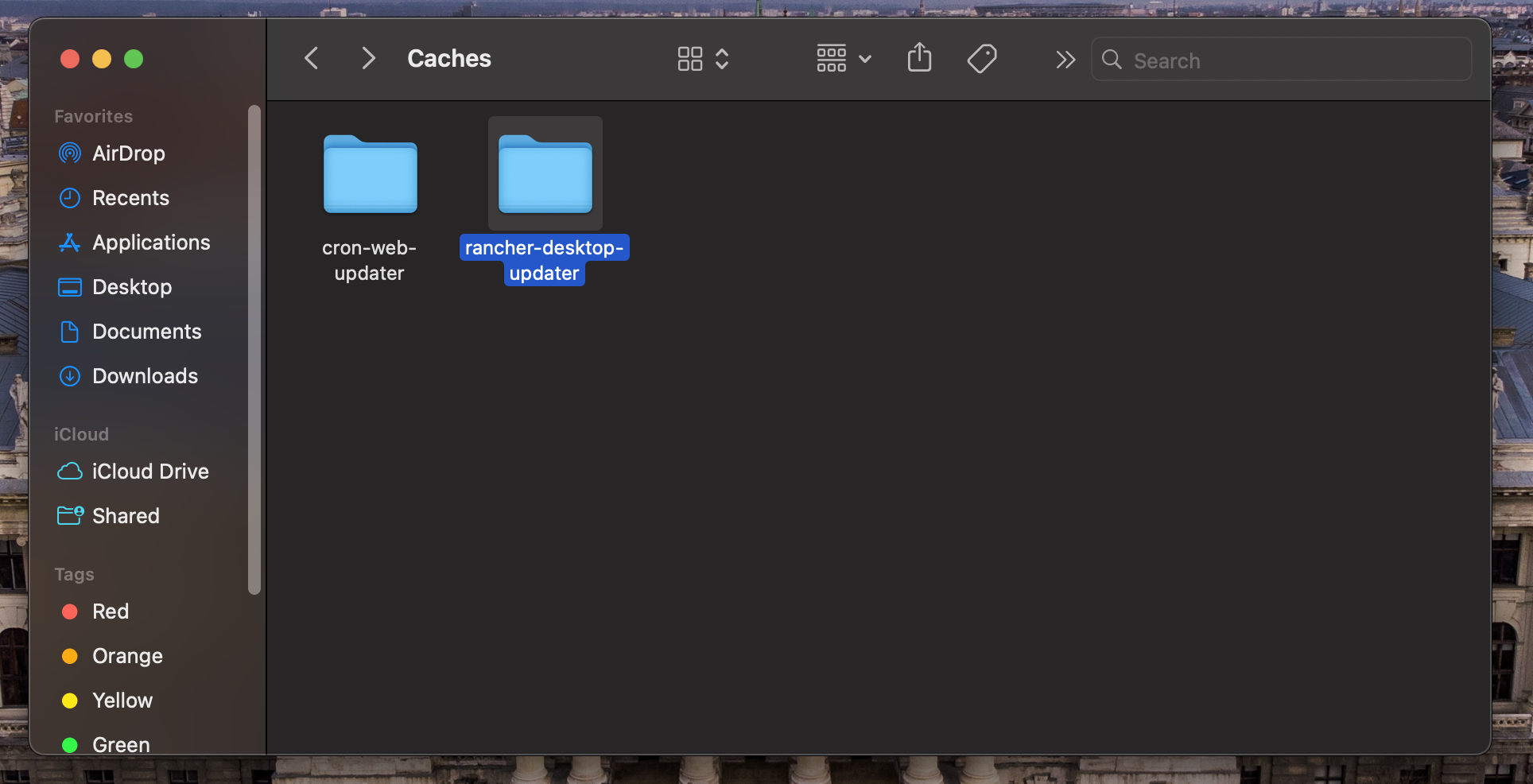
Another directory you should clean is ~/Library/Preferences, there you will
find a directory and a plist file.
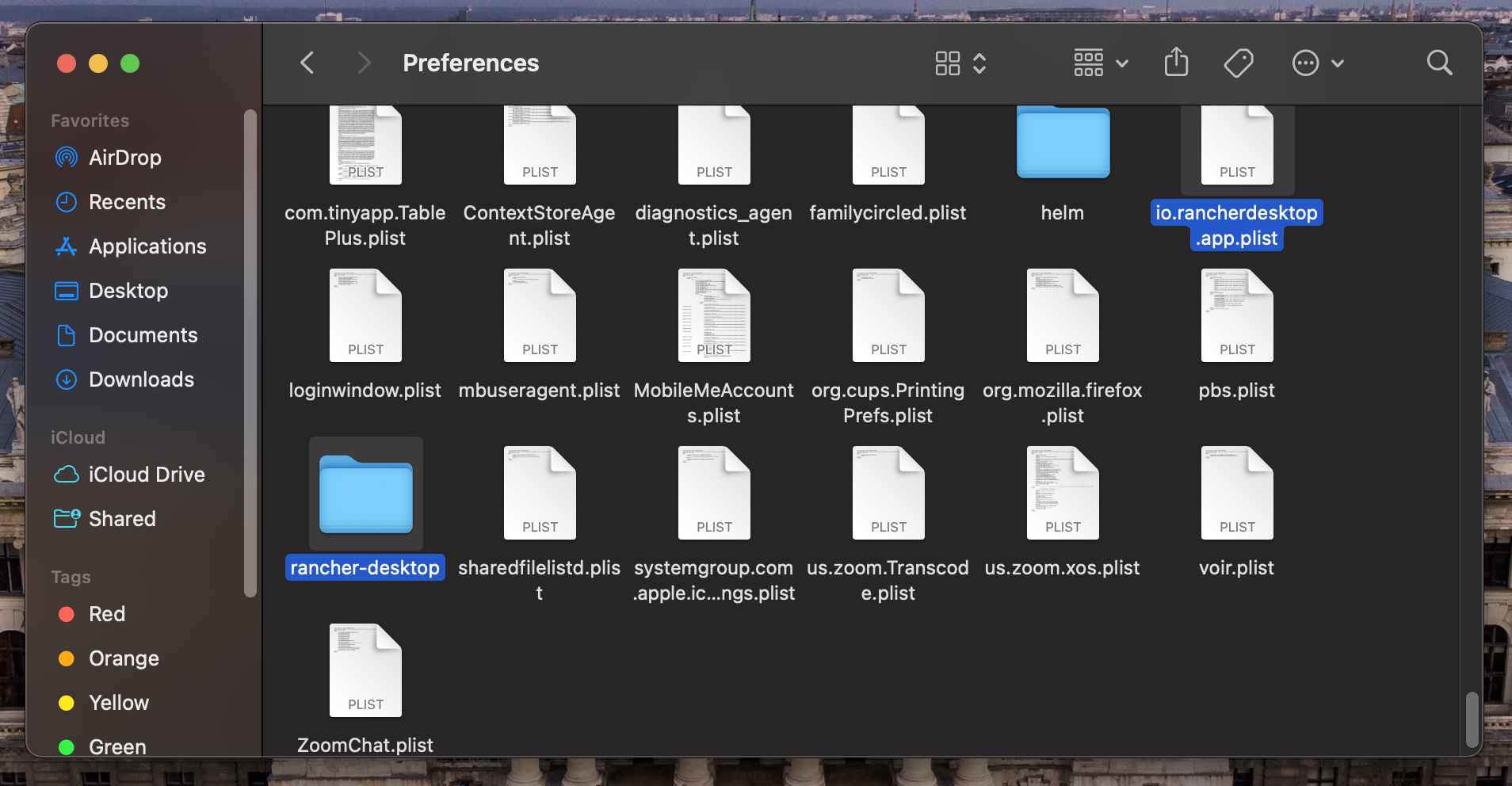
Logs is another place to search as well.
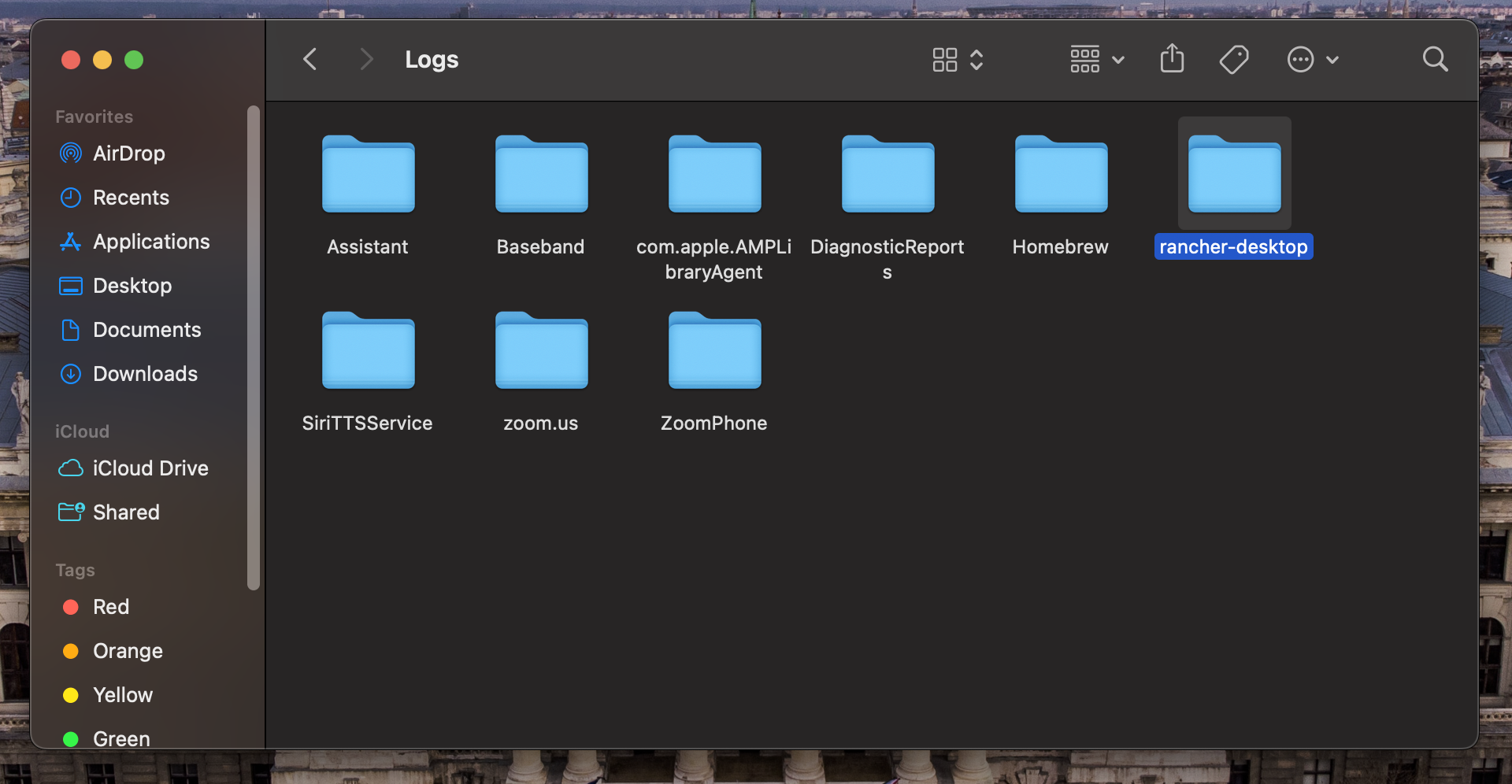
Enter OrbStack
You can download OrbStack from the official website visiting docs.orbstack.dev/quick-start, or using Homebrew!
brew install orbstackAnd here is when the fun begins, OrbStack will allow you to spin up Linux Machines or Docker. But the great thing is that you can do both and you won’t need a Linux machine to run containers!
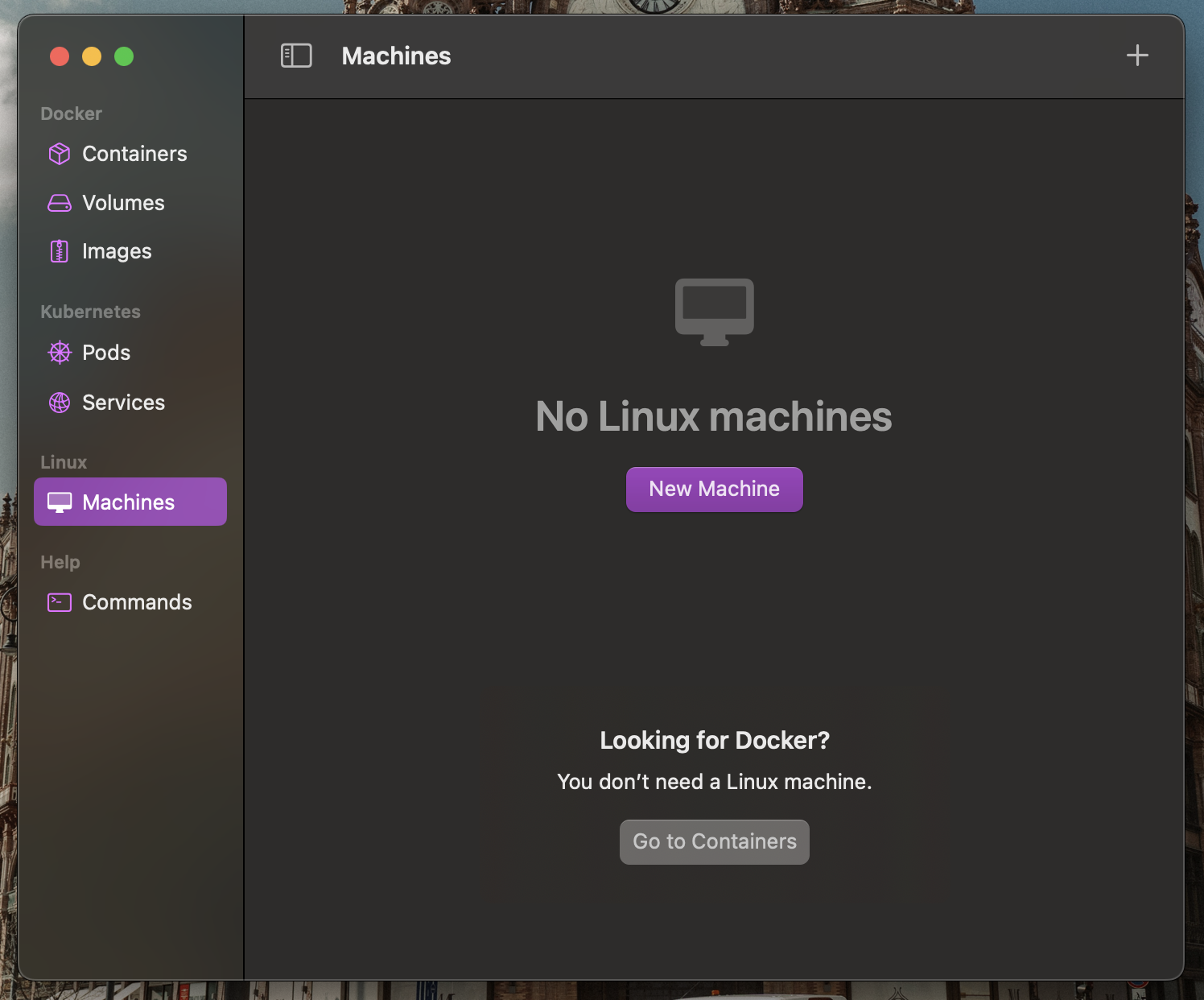
Back in Rancher Desktop, I had a QEMU instance running, eating 40%-60% of my CPU, sometimes just to spin up a PostgreSQL instance.
You can list running containers and manage Linux VMs just by clicking a couple buttons, its super fast and easy to use, that without mentioning the native macOS GUI.
